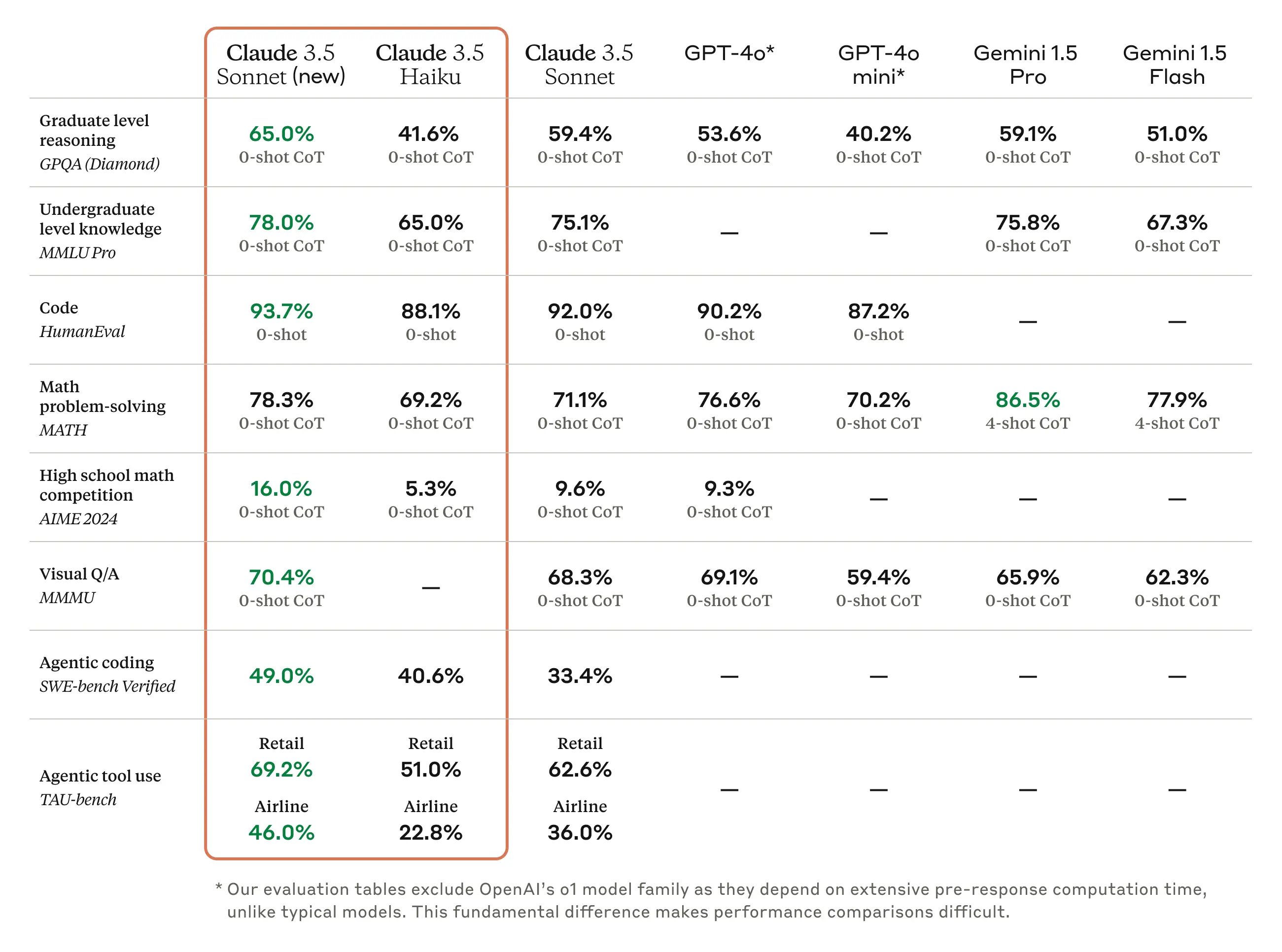Claude 3.5 Sonnet & Haiku: Pioneering AI with Human-Like Computer Use
By Horay AI Team|
Just recently, on October 22, 2024, Anthropic introduced an upgraded version of Claude 3.5 Sonnet, now available to the public. This latest model represents a significant leap in Anthropic's AI capabilities, particularly in coding performance and the Computer Use capability, allowing Claude to interact with software in ways similar to a human. Alongside this, Anthropic has hinted at the release of Claude 3.5 Haiku, a faster, next-generation model with further enhancements in a lot of interactive tasks. Together, these releases all emphasize Anthropic’s commitment to advance the landscape of AI for both developers and businesses.
Claude 3.5 Sonnet: Leading the Charge in Computer Use
One of the most intriguing updates in Claude 3.5 Sonnet is the "Computer Use" feature, which enables the model to emulate human interactions with a computer. Unlike traditional models that rely solely on natural language processing, this capability allows Claude to interpret visual elements on a screen. This new level of functionality is particularly beneficial for developers, as it opens up possibilities for some automating complex workflows, conducting research, and performing open-ended tasks across various complicated software tools.
This capability addresses a critical gap in existing AI functionality—bridging the gap between reasoning and real-world application. With this, Claude can "see" and interpret images, deducing what’s displayed on a screen and using available software tools to perform tasks. For instance, the youtube video shows that if a user needs to extract information from a messy spreadsheet, Claude could take a screenshot, analyze the data, and take steps to organize it based on the given instructions. This adaptability eliminates some special needs for building custom tools for every specific task, enabling Claude to work flexibly with a wide range of programs.
Claude 3.5 Sonnet is the first large-scale AI model to offer the "Computer Use" capability in a public beta. By integrating general computer skills, Anthropic empowers developers to automate repetitive processes, and even sometimes tackle open-ended research tasks. Developers can also leverage this new API to translate written instructions into computer actions, making it easier to automate steps in multi-layered workflows. Although the "Computer Use" feature is still experimental, Anthropic has released it, aiming to gather feedback, refine its performance, and understand its potential in real-world applications.
Advantages of the Upgraded Claude 3.5 Sonnet

- 1. Benchmark PerformanceClaude 3.5 Sonnet (new) has demonstrated overall performance improvements across various benchmarks. The model shows notable gains in agentic coding and tool use tasks. For example, its score on SWE-bench Verified for agentic coding has increased from 33.4% to 49.0%, showcasing its strengthened ability in completing complex coding tasks. On the TAU-bench, which evaluates tool use proficiency, the model also improves from 62.6% to 69.2% in the retail sector and from 36.0% to 46.0% in the more challenging airline sector.
These advancements indicate that Claude 3.5 Sonnet is not only more capable of handling complex coding tasks but also has an enhanced ability to use various tools efficiently. - 2. Enhanced AI-Powered Coding Upgraded Claude 3.5 Sonnet excels in coding tasks, supporting developers by delivering accurate code completions and effective debugging suggestions. With significant improvements in its coding abilities, it offers developers a reliable assistant for coding, testing, and refactoring workflows. As demonstrated in its performance on the HumanEval benchmark, Claude 3.5 Sonnet scores 93.7%, an improvement that underscores its enhanced coding accuracy and capability.
Claude 3.5 Haiku: A Preview of What’s Coming
While Claude 3.5 Sonnet has set new standards, the upcoming Claude 3.5 Haiku, expected to be released later this month, is anticipated to further elevate Anthropic's offerings. This next-generation model shows promising enhancements across several key areas:
- 1. Coding EfficiencyClaude 3.5 Haiku aims to surpass existing coding models with swift, precise code suggestions that help streamline development workflows. Scoring 40.6% on SWE-bench Verified, Haiku outperforms many other models, including its predecessor and GPT-4o. These improvements make Haiku ideal for software teams seeking to enhance productivity with especially fast, high-quality code completions.
- 2. Interactive Chatbots Haiku’s enhanced conversational abilities make it a strong candidate for developing responsive chatbots capable of handling high volumes of user interactions. With improved response times and conversational accuracy, this model is positioned to power customer service and interactive applications on a large scale.
- 3. Data Processing at High Speeds Another key advantage of Haiku is its ability to process data up to 3× faster than comparable models. This efficiency is highly valuable for industries that rely on rapid data extraction and automated labeling tasks, such as finance, healthcare, and academic research.
- 4. Real-Time Content Moderation For social media and online communities, Haiku promises dependable, real-time content moderation. Its improved reasoning and content understanding capabilities enable it to detect inappropriate content swiftly and accurately, helping platforms maintain a safe and engaging environment for users.
- 5. Cost Efficiency In addition to performance improvements, Claude 3.5 Haiku is designed with cost efficiency in mind. With caching mechanisms, users can achieve up to 90% cost savings, making it a financially appealing choice for companies with extensive AI needs.
Conclusion
Anthropic’s recent developments with Claude 3.5 Sonnet and the soon-to-arrive Claude 3.5 Haiku have marked a pivotal moment in AI evolution. With Claude 3.5 Sonnet, developers gain the groundbreaking Computer Use capability that allows Claude to interact with a computer much like a human, opening up new possibilities for automation and research. The model’s strengthened coding capabilities further enhance its value as a tool for developers and enterprises.
Looking ahead, Claude 3.5 Haiku’s impending release is bringing exciting promises in terms of speed, cost efficiency, and coding precision, setting the stage for even broader AI applications. Anthropic is clearly committed to pushing the boundaries of what AI can achieve, and both Claude 3.5 Sonnet and Claude 3.5 Haiku keep exemplifying this dedication.
Stay tuned as Anthropic continues to redefine AI’s potential, making not only advanced but also versatile tools accessible to developers and businesses worldwide.